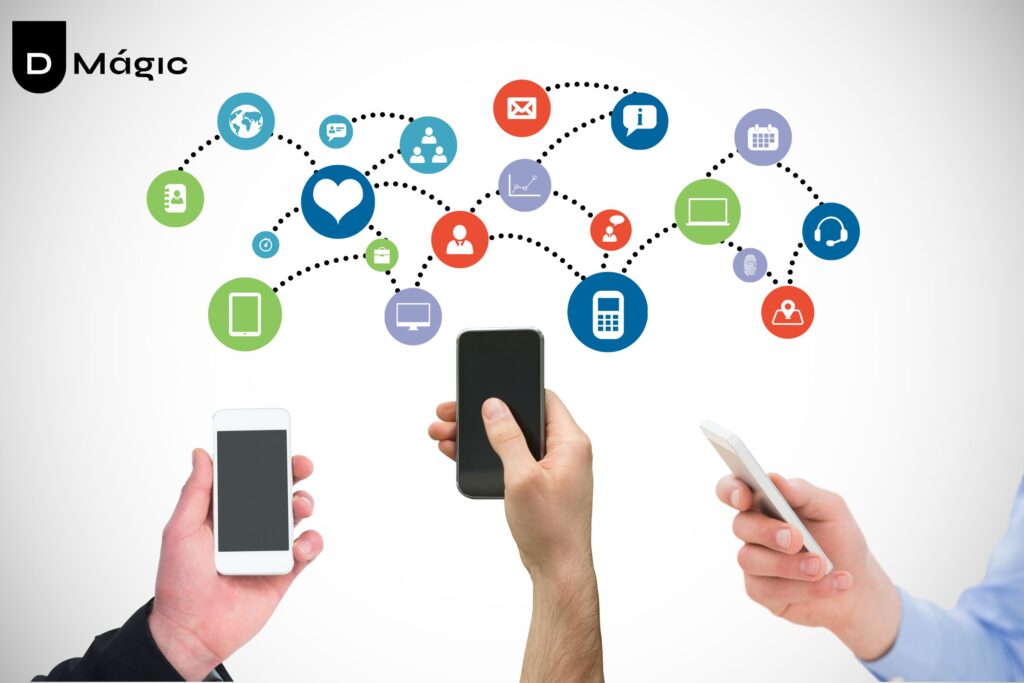Integrating offline and online marketing strategies is crucial for creating a cohesive and comprehensive marketing plan that leverages the strengths of both channels. This synergy can enhance brand visibility, improve customer engagement, and drive sales. Here are some of the most effective ways to integrate offline and online marketing strategies, discussed in detail.
1. Unified Branding
Consistency is key in any marketing strategy. Ensuring that your brand message, visual identity, and tone of voice are consistent across both offline and online platforms helps in building a strong, recognizable brand.
- Brand Guidelines: Create comprehensive brand guidelines that include logo usage, color schemes, typography, and messaging. Ensure all marketing materials, whether printed or digital, adhere to these guidelines.
- Cross-Promotion: Use offline materials to promote online platforms and vice versa. For example, include your website URL, social media handles, and QR codes on printed materials like brochures, business cards, and packaging.
2. QR Codes and Short URLs
QR codes and short URLs are effective tools for bridging the gap between offline and online marketing. They make it easy for customers to transition from physical to digital touchpoints.
- QR Codes: Place QR codes on offline materials such as posters, flyers, product packaging, and billboards. When scanned, these codes can direct customers to your website, social media pages, or special landing pages with promotions.
- Short URLs: Use memorable and easy-to-type short URLs on offline materials. These URLs should redirect to specific online content that complements the offline message.
3. Events and Webinars
Events, whether physical or virtual, offer great opportunities to integrate offline and online marketing efforts.
- Promote Online through Offline Channels: Use offline channels such as print ads, direct mail, and in-store signage to promote online events like webinars or live streams.
- Capture Leads: At physical events, collect email addresses and social media handles to engage with attendees online post-event. Conversely, promote physical events through email newsletters and social media.
- Live Streaming: Live stream physical events on social media platforms to reach a broader audience. Encourage online attendees to participate through live chats and Q&A sessions.
4. Social Media and Traditional Media Synergy
Leveraging the reach of traditional media with the engagement of social media can amplify your marketing efforts.
- TV and Radio Ads: Include hashtags and social media handles in TV and radio ads to encourage viewers and listeners to follow and engage with your brand online.
- Print Media: Print ads in magazines and newspapers can feature QR codes or URLs that lead to special online promotions or content.
- User-Generated Content: Encourage customers to share their experiences with your brand on social media, using specific hashtags. Feature the best posts in your offline marketing materials to create a feedback loop.
5. Loyalty Programs
Loyalty programs are a powerful way to integrate offline and online experiences, fostering customer retention and encouraging repeat business.
- Online Sign-Up: Allow customers to sign up for loyalty programs online, but promote the benefits in-store through posters and flyers.
- Mobile Apps: Develop a mobile app that integrates your loyalty program, enabling customers to check their points and redeem rewards both online and in-store.
- Exclusive Offers: Provide exclusive online offers to loyalty program members who also engage with your brand offline. For example, offer a discount code for online purchases to customers who visit your physical store.
6. Data Collection and Analysis
Integrating data from both offline and online channels provides a holistic view of customer behavior and preferences, allowing for more effective marketing strategies.
- Unified CRM Systems: Use customer relationship management (CRM) systems that integrate data from both offline and online interactions. This enables you to track customer journeys and tailor marketing efforts accordingly.
- Surveys and Feedback: Collect customer feedback both online (through email surveys and social media) and offline (through comment cards and in-store surveys). Analyze this data to identify trends and areas for improvement.
- Targeted Campaigns: Use insights gained from data analysis to create targeted marketing campaigns that address the specific needs and preferences of different customer segments.
7. Consistent Customer Experience
Providing a consistent customer experience across both offline and online channels is essential for building trust and loyalty.
- Training: Train staff to provide the same level of service and uphold the same values in both offline and online interactions.
- Omnichannel Support: Offer customer support through various channels, ensuring that customers can get help whether they are shopping online or visiting a physical store.
- Personalization: Use data to personalize interactions. For instance, if a customer browses a product online but doesn’t purchase, a sales associate in-store can offer assistance when they visit the store.
8. Content Marketing
Content marketing can serve as a bridge between offline and online efforts by providing valuable information that engages and educates your audience.
- Print and Digital Content: Repurpose content across both mediums. For example, turn a popular blog post into a printed brochure or convert a white paper into an engaging infographic for social media.
- Storytelling: Use storytelling to create a cohesive narrative that spans both offline and online channels. Share customer success stories, case studies, and behind-the-scenes content across all platforms.
9. Influencer and Celebrity Endorsements
Leveraging influencers and celebrities can amplify your marketing message across both offline and online channels.
- Campaigns: Run integrated campaigns where influencers promote your brand online while also appearing in offline advertising materials like TV commercials and billboards.
- Event Appearances: Have influencers and celebrities appear at physical events and share their experiences on their social media platforms, creating a buzz that spans both channels.
Conclusion
Integrating offline and online marketing strategies is about creating a seamless experience for your customers, regardless of how they interact with your brand. By leveraging unified branding, QR codes, events, social media, loyalty programs, data analysis, consistent customer experience, content marketing, and influencer endorsements, you can effectively bridge the gap between the physical and digital worlds. This comprehensive approach not only enhances brand visibility and customer engagement but also drives sales and builds long-term loyalty.
Also Read-
Best Marketing Strategies to Boost Sales for Small Business?


